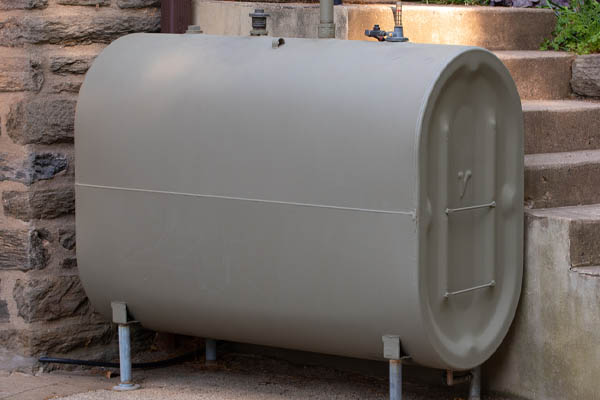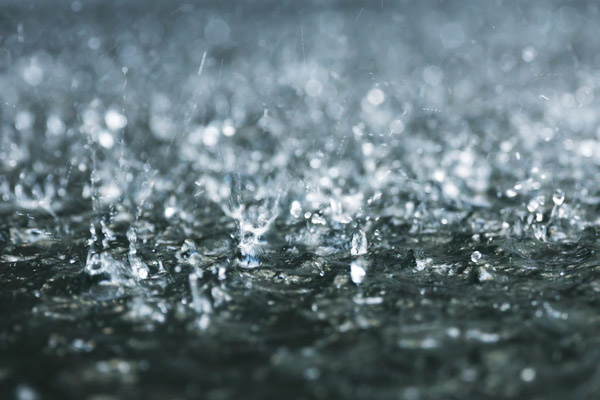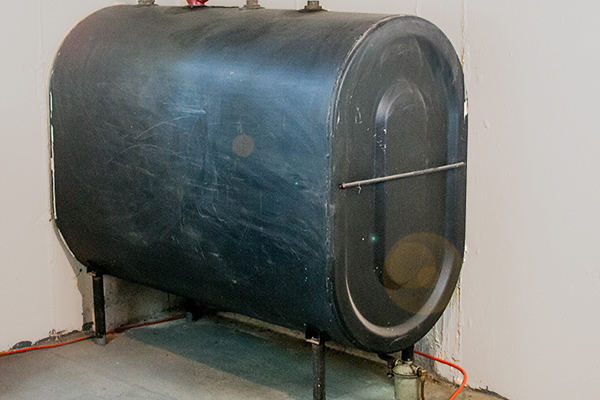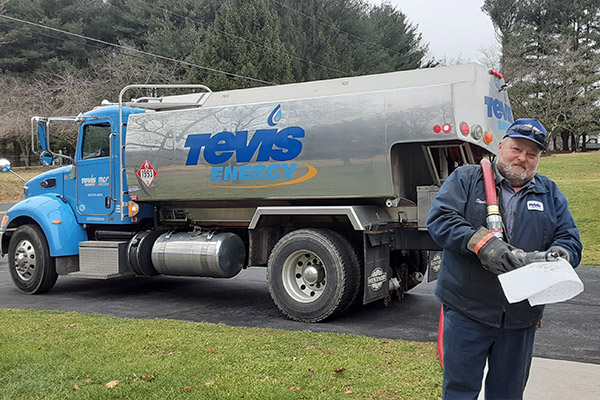
Every oil heating system has a fuel oil tank to secure and store its fuel. This setup works very effectively, but it isn’t entirely perfect. At times, water can enter the interior of the heating oil tank to create problems like oil tank condensation. Condensation in the fuel oil tank is a common issue, but fortunately, it is also a preventable one.
Here’s What You Should Know About Oil Tank Condensation
Keep reading to find out more about oil tank condensation including the best preventative strategies.
How Water Gets Into Your Oil Tank
In nature, water is everywhere and it’s also present in many different forms. Over time, water can slowly enter a fuel oil tank. By determining exactly how water penetrated your fuel oil tank, you’ll have the best ability to prevent the issue from recurring.
1. Rainwater Can Get Into Fuel Oil Tanks

If you have a fuel oil tank that’s been installed outside, then your heating oil tank is exposed to rainwater and other forms of outdoor moisture. Water is incredibly pervasive. It has the ability to get into tight spaces via narrow gaps, loose lids, and loose caps. A tank that’s situated close to your home is also susceptible to moisture whenever your gutters overflow. There can even be problems like cracked walls, damaged seals, and other weak areas if you have a fuel oil tank that’s fairly old.
2. Fuel Oil Tank Condensation Is A Threat Too
Regardless of where your home oil tank is located, condensation is always a potential issue. Moist, outdoor air can be sucked in by the air vents. If the inside temperature is sufficiently low, then water vapor will move from a gas form into a liquid one. Water droplets will form on the interior walls of the tank and then gradually fall down to the tank bottom. While several drops of water certainly aren’t a major issue, problems with condensation will invariably worsen if they’re left unchecked.
3. Groundwater Issues
For oil tanks that are underground, there is always the possibility of water entering through holes at or around the actual container. This is a major cause for concern given that the problem isn’t just about water being able to get in, but also about oil being able to escape and contaminant the surrounding soil. Whenever there is any damage to an underground oil tank, no matter how moderate or severe this damage may be, it’s important to call for professional help right away.
What Will Happen When Water Enters My Heating Oil Tank?

Oil floats on the surface of water and thus, it’s difficult to detect water in your tank through mere observation. This is all the more challenging when a tank is positioned underground given that this unit cannot be easily accessed. More often than not, water in tanks winds up going undetected for quite some time. This is an issue that only makes itself known as various symptoms start to present.
It’s always best to be proactive in preventing this issue rather than attempting to identify and resolve water damage in your heating oil storage tank. Regular inspections can go a long way towards keeping this issue at bay. For routine moisture checks, consider using a water-finding paste (you can speak with a heating oil company to find one or you can check out the recommendations from your manufacturer), and then place this paste at the bottom of the tank where water will invariably settle after entering. If the paste changes in color, this means that there’s moisture present. If there are large quantities of water in your heating oil tank, put a professional on the job right away.
Tips For Preventing Condensation In Your Heating Oil Tank
Now that you know what some of the possible causes are, take some time to prevent more water from gaining access to the interior of your oil tank. Following are several easy tips that you can start using right now:
1. Inspect Your Heating Oil Tank

Make a habit of checking the outside of your heating oil tank for evidence of damage including paint chips, rust, perforations, and leaks. Find out whether or not all caps and lids are closed. Make sure that these are tightly screwed on.
2. Test The Tank For Water
You cannot catch everything with a mere visual inspection so be sure to additionally perform periodic testing for water. This can be done with a water-finding paste that either your manufacturer or your heating oil company has recommended, and then try reaching all the way to the bottom of the tank cylinder. If you have an underground tank, test the surrounding soils for signs of contamination.
3. Keep Your Home Oil Tank Protected From Heat
New heating oil tanks should be installed in shady areas and their exteriors should be painted with light-colored, reflective paints so that the interior of tanks aren’t experiencing large fluctuations in temperature as the result of changing weather conditions outside.
4. Keep Your Heating Oil Tank Filled

Letting the level of heating oil in your fuel tank drop extremely low allows more air in. This increase in air raises the risk of condensation on the inside of the tank. Have oil delivered before this occurs. Schedule a heating oil delivery to be sure to keep your heating oil tank well-filled both during the heating season and after it.
5. Contact Professionals
Professionals can use strategies such as advanced testing and regular cleaning to keep problems from occurring. They can make sure that oil heating oil tanks are replaced in a timely fashion, and they can also make recommendations concerning the best placement for this equipment to help extend its lifespan.
How To Get Rid Of Water In Your Heating Oil Tank
If you get a positive result when performing a moisture test, then there are three things that you can do to get rid of standing water. However, this matter is always best handled by a licensed professional. Following are some measures that professionals may take, depending upon the type and severity of the issue:
1. Drain The Oil Tank
A metal tank has a sludge valve at its base. Professionals can open this valve up so that water can run out. Some oil may flow out too, so they will collect this oil and dispose of it properly.
2. Pump The Heating Oil Tank
Plastic fuel tanks do not have sludge valves but they can be cleared using a hand pump to remove small quantities of water. A pump may not be sufficient for getting rid of a large amount of water, but professionals should be able to.
3. Absorption
If you hire a professional to handle the problem, they may place a water-absorbent sock into your tank so that moisture doesn’t settle at the tank bottom. This sock must be replaced every several months. Old socks should be carefully disposed of. An alternative solution is to use a dispersant that’s alcohol-based.
Damages That May Occur If Water Isn’t Removed From Your Fuel Oil Storage Tank
1. Oil Tank Corrosion
Water might seem harmless enough and thus, a lot of people choose to ignore this problem. However, if you neglect this issue, it can eventually cause serious damage to your home heating system. For instance, water can cause the tank walls to develop rust and other forms of corrosion. Most steel tanks start rusting on the inside. You may see that the cylinder is perfectly fine from the outside, but it could be wasting away at its interior. This weakens the tank walls and creates a high likelihood of tank leaks later on. More importantly, the performance and efficiency of the entire system will go down.
2. Freezing
The freezing point of oil means that it can remain in the cold throughout the winter without any problems. However, water freezes at a higher temperature – at just 32 degrees Fahrenheit or 0 degrees Celsius. Frozen water in a fuel tank can block the supply of oil and lead to a total heating system failure during times when having functional home heating equipment is absolutely necessary.
3. Bacterial Growth
Bacteria are able to thrive in environments that are moist. Water in an oil tank creates an ideal space for bacteria to multiply. This can result in sludge formation at the base of your heating oil tank. Bacteria can also release harmful acids that expedite corrosion within the tank, at the burners, fuel lines, and filters. This corrosion can lead to lead and a host of other serious problems.
Final Thoughts
Water doesn’t belong in your heating oil tank. Keep it out to prevent serious problems with your heating system and major tank damage. Follow the preventative measures that have been listed above and get professional help if the issue is already well-advanced.
Contact Tevis Energy For Your Home Heating Oil Needs

Tevis Energy is a trustworthy HVAC company and heating oil delivery company that services central Maryland and southern Pennsylvania. Our company offers affordable and the most competitive heating oil prices in the area. Our goal is to provide you with excellent products and services. When you choose us to be your oil supplier, you can rest easy knowing that you will have correct and prompt heating oil deliveries at the best possible prices. Furthermore, we offer various heating oil delivery plans and financing options, as a way to customize your oil deliveries. Be sure to call us today to learn more.
Tevis Energy has certified and highly trained HVAC technicians to cater to all your heating and cooling needs. We guarantee that each of our techs has the experience, skills, and knowledge to provide excellent HVAC services. Our team can assist you with installations, repairs, maintenance, and much more. Our superior HVAC solutions always come at affordable costs.
Call us today to learn more about the products and services our company offers. We provide free, in-home estimates.
You can click here to contact us now or call us at (410) 876-6800 to find out more!
